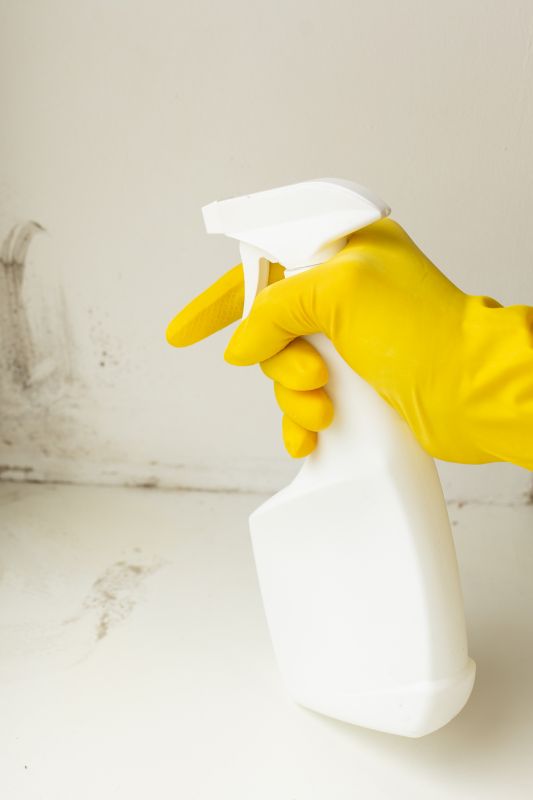Leading Products For Mold Detection Service Professionals
Explore top-rated tools and equipment essential for accurate mold detection and effective remediation planning.
 Detecting mold in indoor environments is crucial for maintaining healthy living and working spaces. Mold can develop in hidden areas such as behind walls, under flooring, or within HVAC systems, often going unnoticed until it causes visible damage or health issues. Utilizing specialized products for mold detection can help identify problematic areas early, enabling timely remediation. These tools range from simple testing kits to advanced electronic detectors, each suited for different levels of inspection and expertise.
Detecting mold in indoor environments is crucial for maintaining healthy living and working spaces. Mold can develop in hidden areas such as behind walls, under flooring, or within HVAC systems, often going unnoticed until it causes visible damage or health issues. Utilizing specialized products for mold detection can help identify problematic areas early, enabling timely remediation. These tools range from simple testing kits to advanced electronic detectors, each suited for different levels of inspection and expertise.
Top Overall Option
Multi-Function Mold Detection Device
A versatile mold detection tool that combines air quality monitoring, surface testing, and digital data logging. Its user-friendly interface allows both homeowners and professionals to perform comprehensive assessments, making it a practical choice for various settings. The device's sensitivity to airborne spores and surface contaminants helps identify potential problem areas efficiently.
Types of Products For Mold Detection Service
Air Quality Monitors
Devices that measure airborne mold spores and other pollutants in real-time, providing immediate insights into indoor air quality.
Surface Swab Test Kits
Portable kits that collect samples from surfaces for laboratory analysis to confirm the presence of mold.
Mold Test Plates
Petri dish-based testing kits that allow users to culture mold samples collected from indoor environments.
Infrared Thermometers with Mold Detection
Thermometers that detect temperature variations and moisture levels associated with mold growth hotspots.
Borescopes and Inspection Cameras
Visual inspection tools with flexible probes for examining hidden areas where mold may develop.
Electronic Mold Detectors
Handheld devices that alert users to elevated mold spore levels through digital readings.
Laboratory Testing Kits
Complete kits that enable sample collection and submission for professional laboratory analysis.
Humidity Meters
Tools that measure moisture levels in indoor air and surfaces, indicators of potential mold growth areas.
Laser Particle Counters
Advanced devices that quantify airborne particles, including mold spores, providing detailed air quality data.
VOC Detectors
Devices that detect volatile organic compounds often associated with mold and indoor pollutants.
Popular Choices
Widely used for quick assessment of indoor mold spores and overall air quality, suitable for both home and professional use.
Commonly chosen for their simplicity and ability to identify mold presence on various surfaces.
Popular among DIY enthusiasts for culturing mold samples and observing growth patterns.
Frequently used for detecting moisture hotspots that could harbor mold growth.
Valued for their ability to visually inspect hidden spaces where mold might be developing.
Popular for their ease of use and immediate digital feedback on mold spore levels.
Trusted for definitive results when confirming mold presence and types.
Commonly used to monitor moisture levels that contribute to mold growth.
Chosen for their detailed particle measurement capabilities, especially in professional settings.
Many mold detection products are designed for ease of use, allowing homeowners and professionals alike to perform assessments without extensive training. For example, surface swab kits can collect samples for laboratory analysis, while air quality monitors can measure airborne mold spores in real-time. Some devices incorporate digital technology to provide detailed readings and data logging, helping users track mold presence over time. When selecting a product, it is important to consider factors such as sensitivity, ease of use, and whether the device is suitable for professional or casual use.
In addition to detection devices, there are also comprehensive testing kits that include multiple components, allowing for a thorough investigation of suspected mold issues. These kits often come with instructions for sample collection and submission to laboratories for analysis. For those concerned about potential mold growth in hard-to-reach areas, specialized probes and borescopes can provide visual inspection capabilities, making it easier to identify hidden mold colonies. Proper detection is a vital first step in addressing mold problems and ensuring indoor air quality is maintained.
Key Buying Considerations
- Sensitivity and detection range of the device for accurate mold spore measurement.
- Ease of use and whether the product is suitable for DIY use or requires professional training.
- Type of mold detection (airborne, surface, or both) that the product can perform.
- Data logging capabilities for tracking mold levels over time.
- Portability and size for ease of use in various locations.
- Power source options, such as batteries or rechargeable units.
- Compatibility with smartphones or computers for data analysis.
- Speed of results and whether immediate readings are available.
- Cost of consumables or replacement parts, such as test plates or sensors.
- Laboratory analysis options if the device is a sampling kit.
- Visual inspection features, such as built-in cameras or borescopes.
- Brand reputation and user reviews for reliability and accuracy.
- Additional features like humidity measurement or temperature sensing.
- Compliance with safety and quality standards relevant to indoor air testing.
- Availability of customer support and instructional resources.
This content may contain affiliate links. We may earn a commission if you make a purchase through these links, at no additional cost to you.
